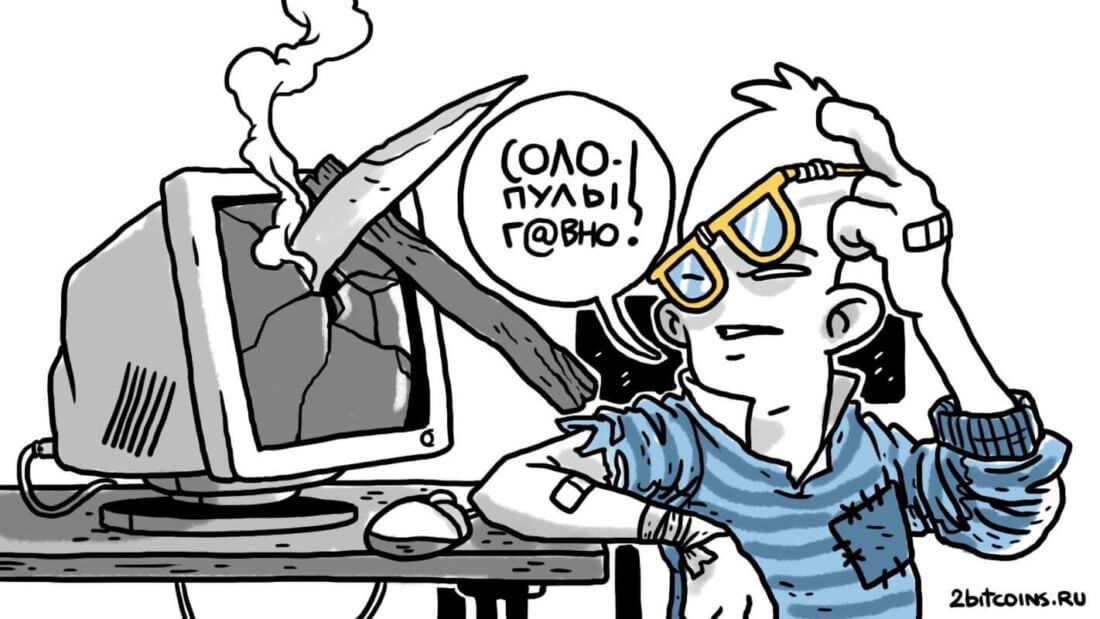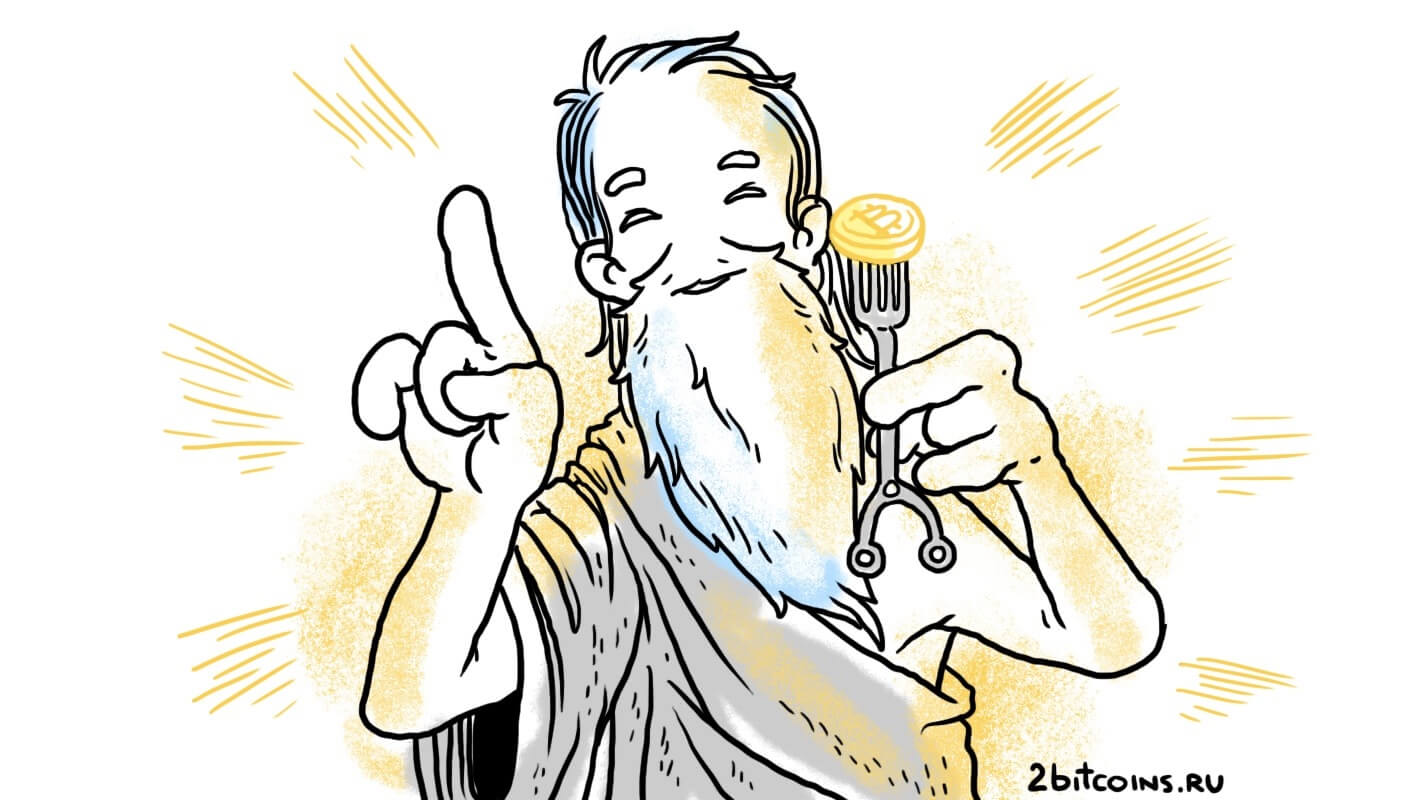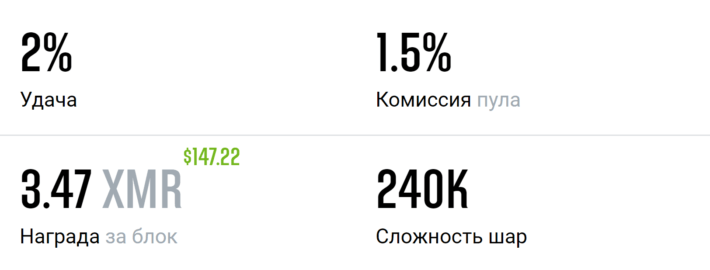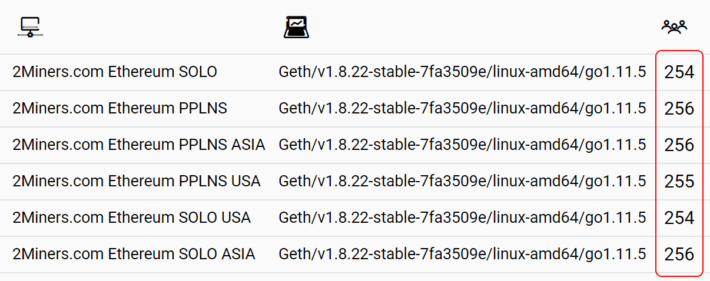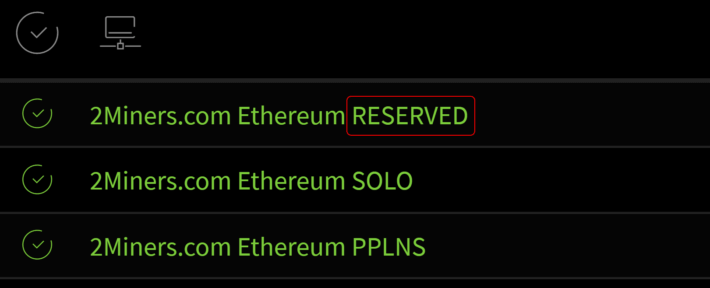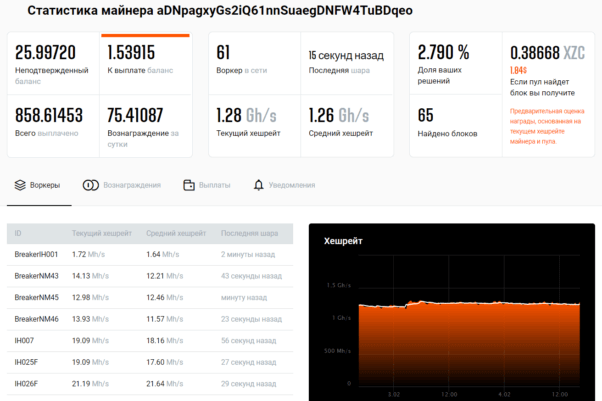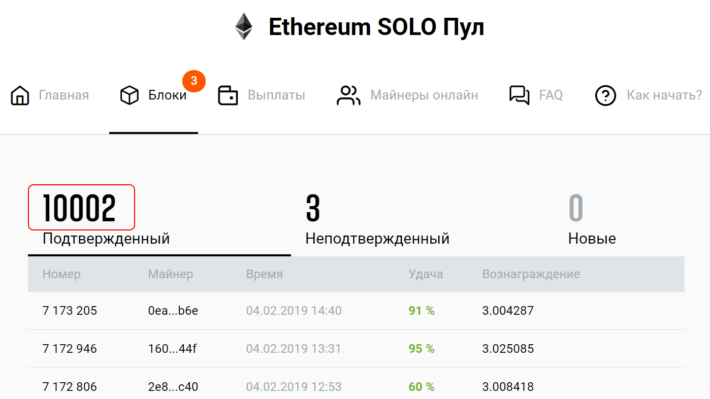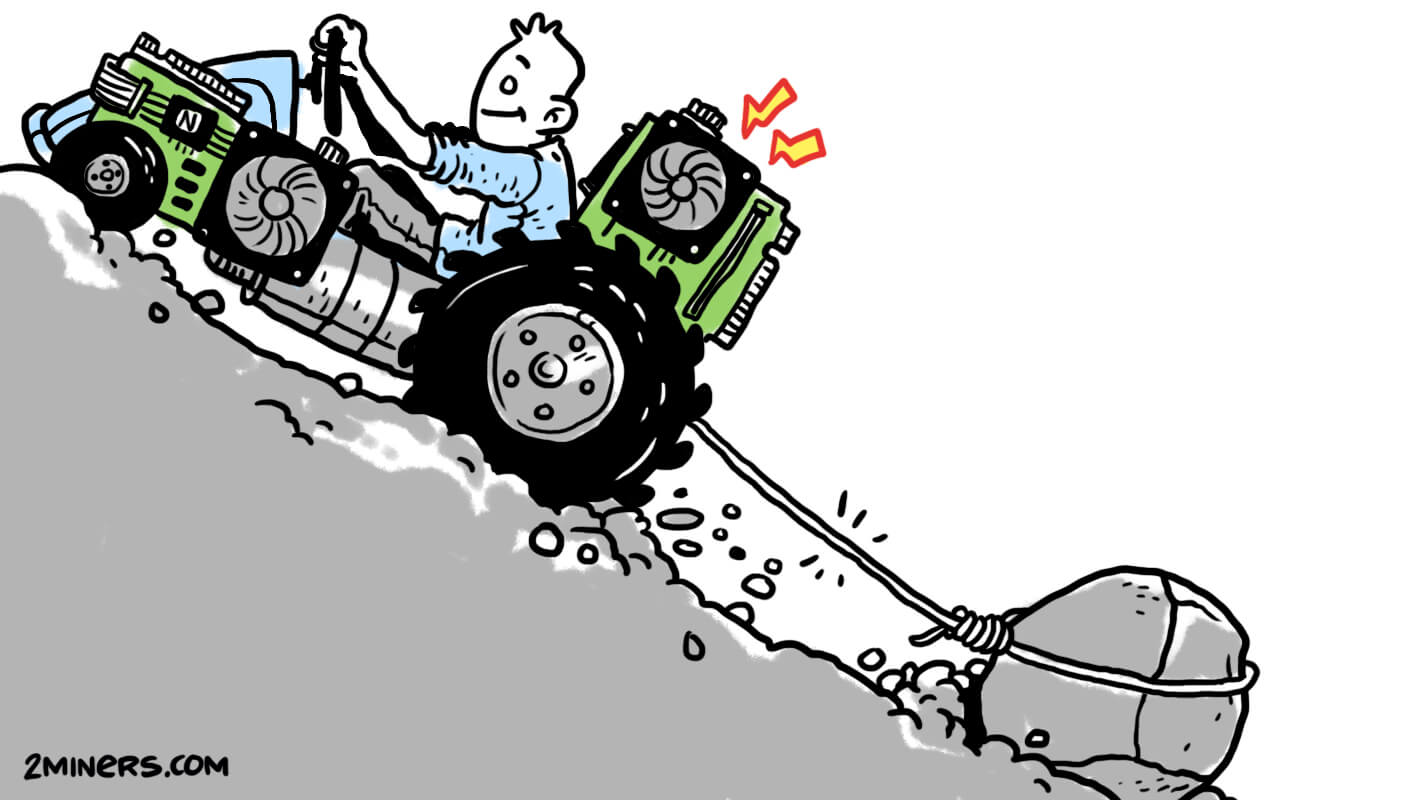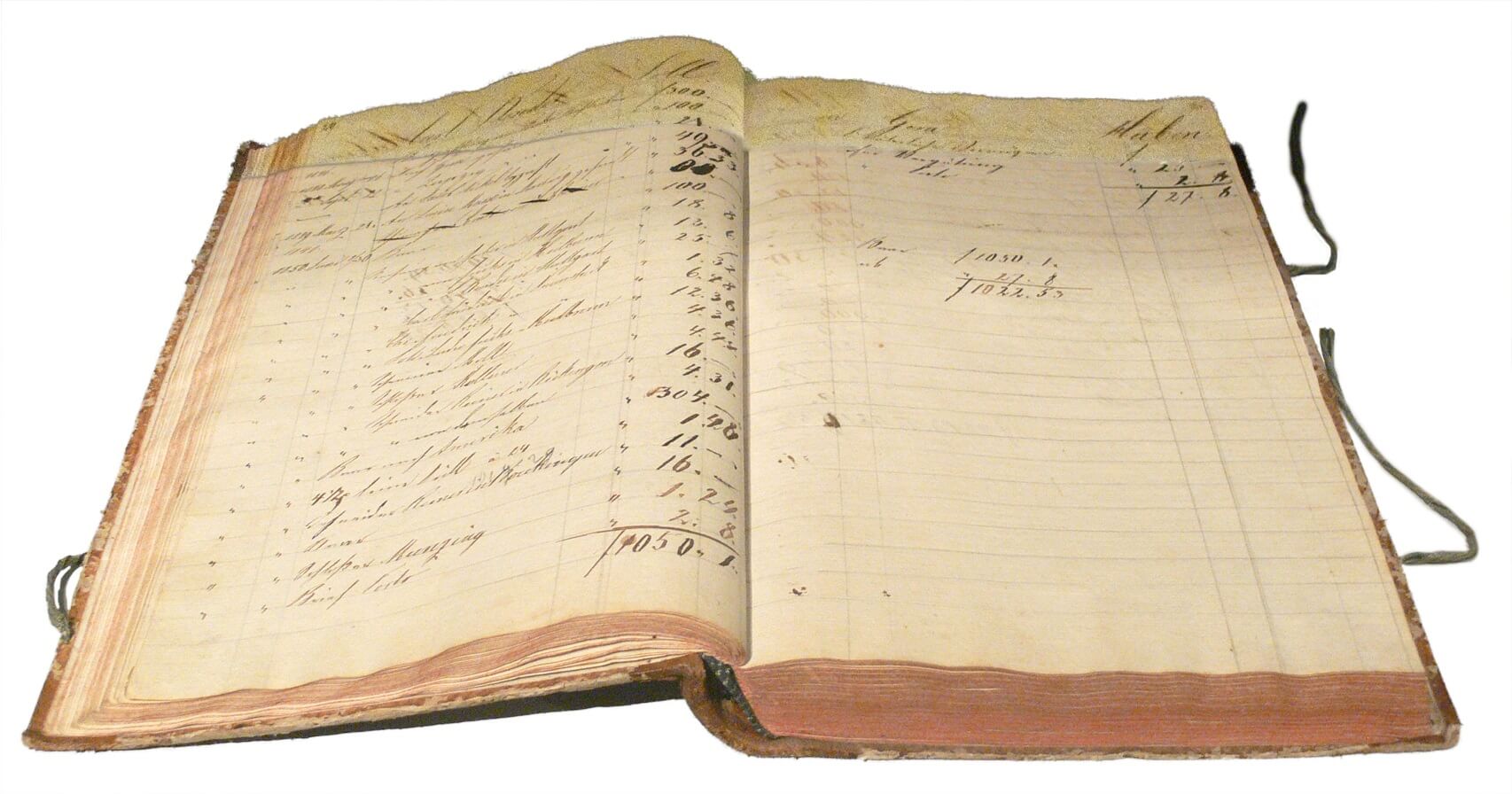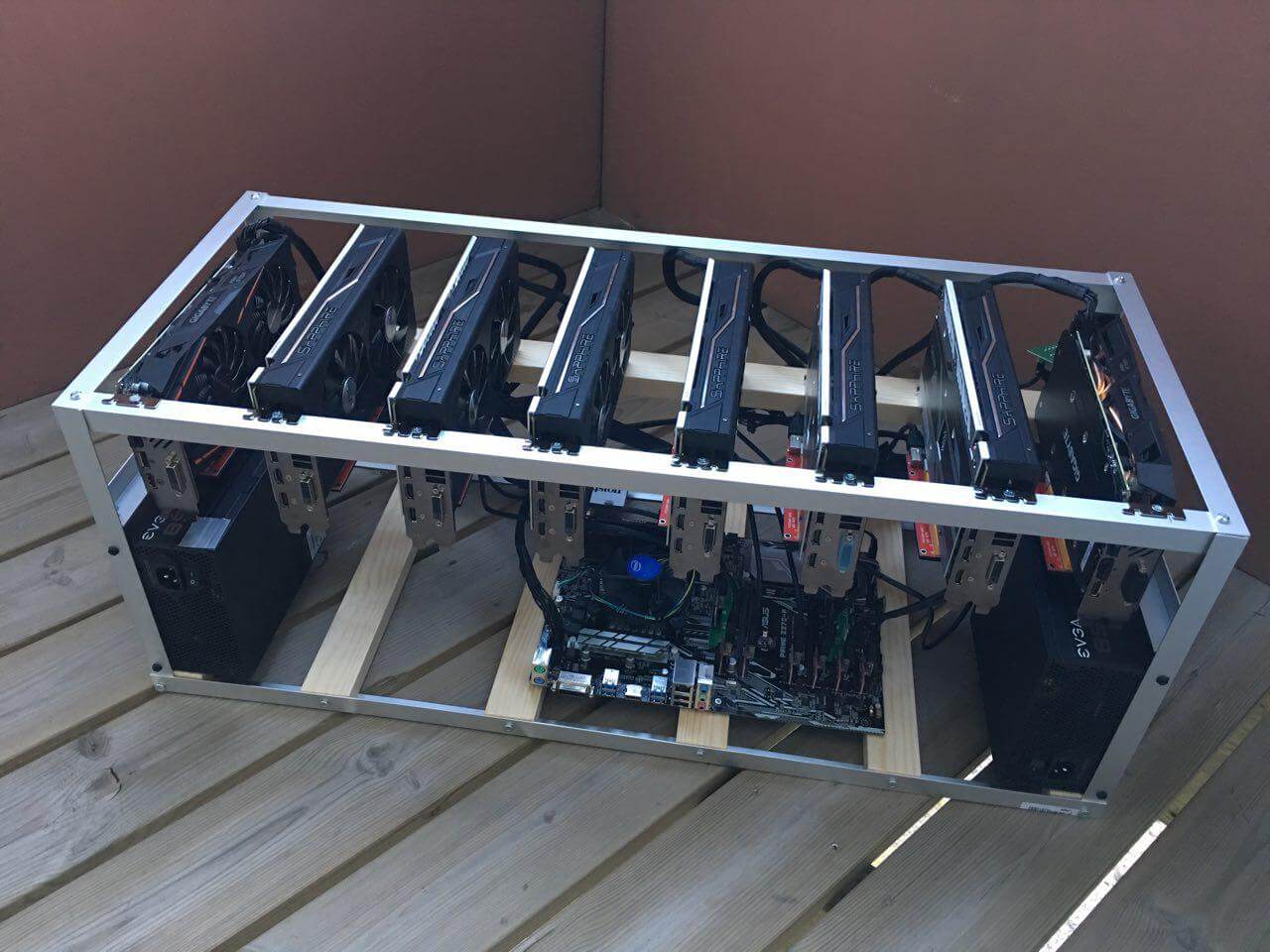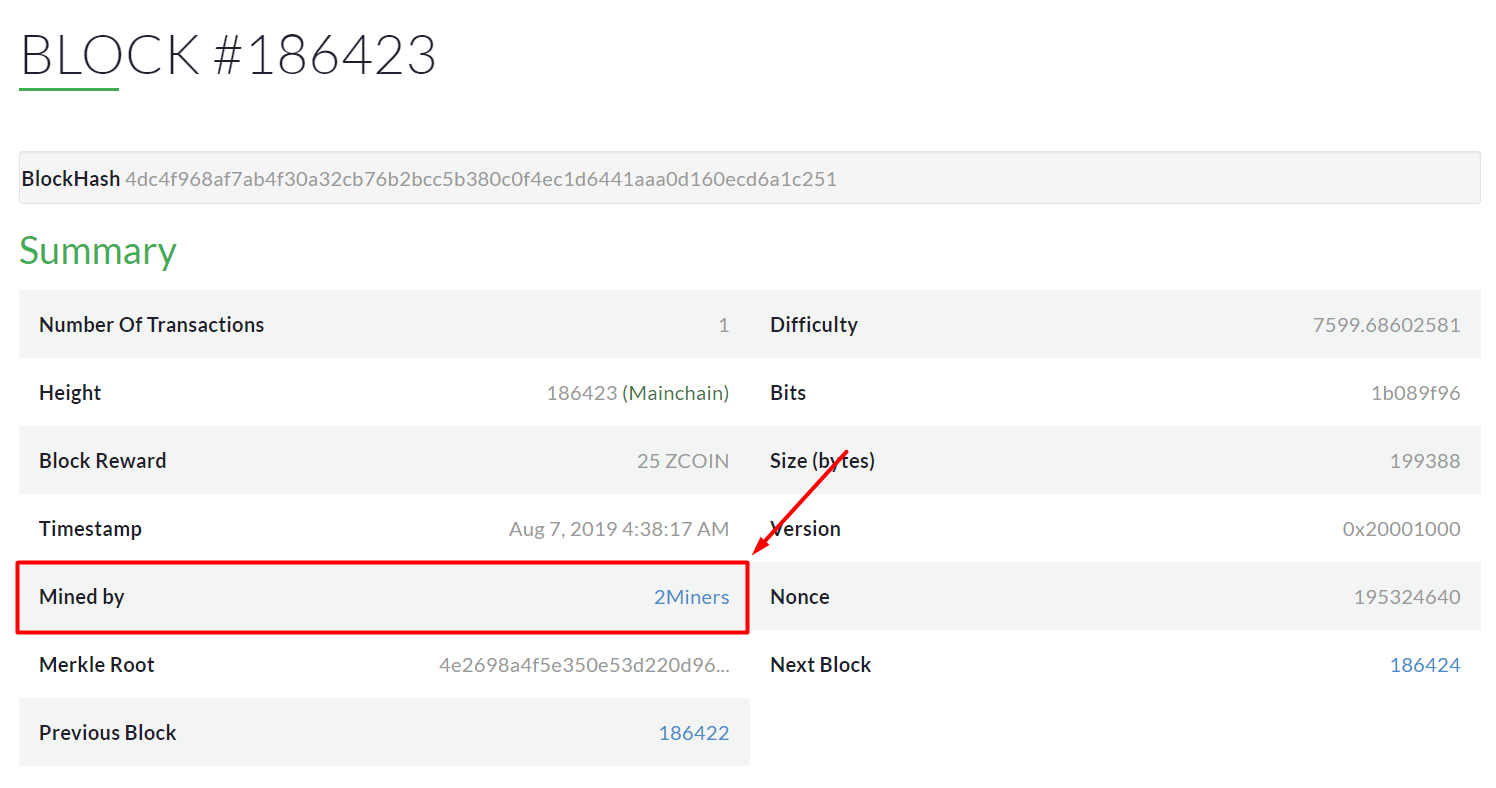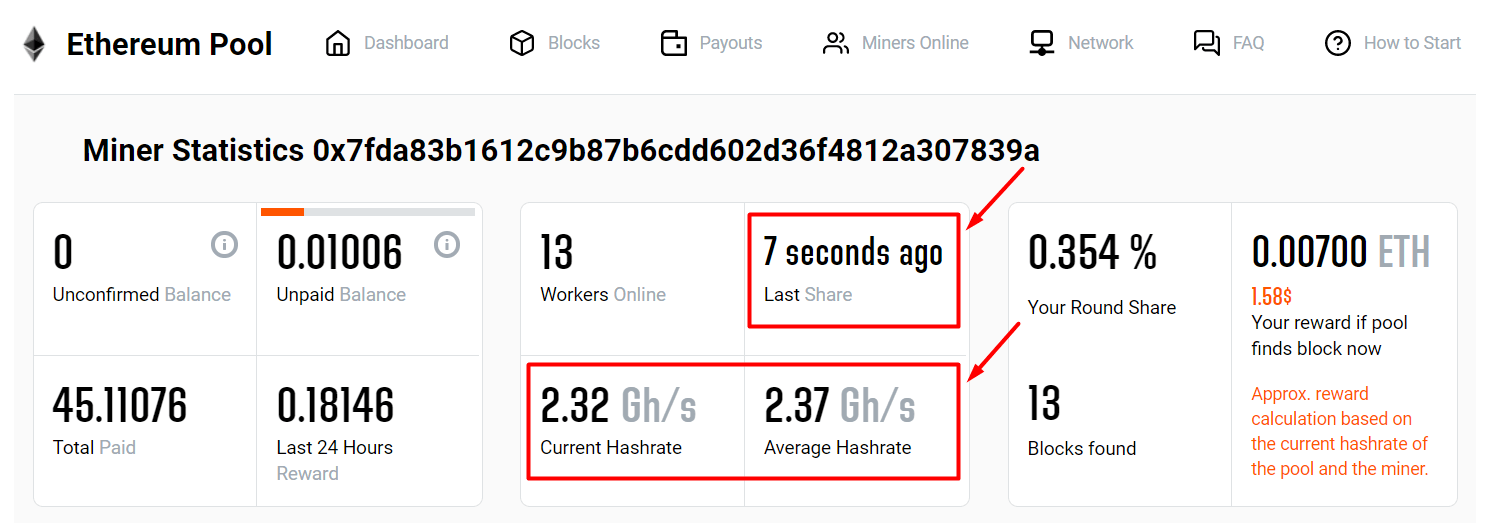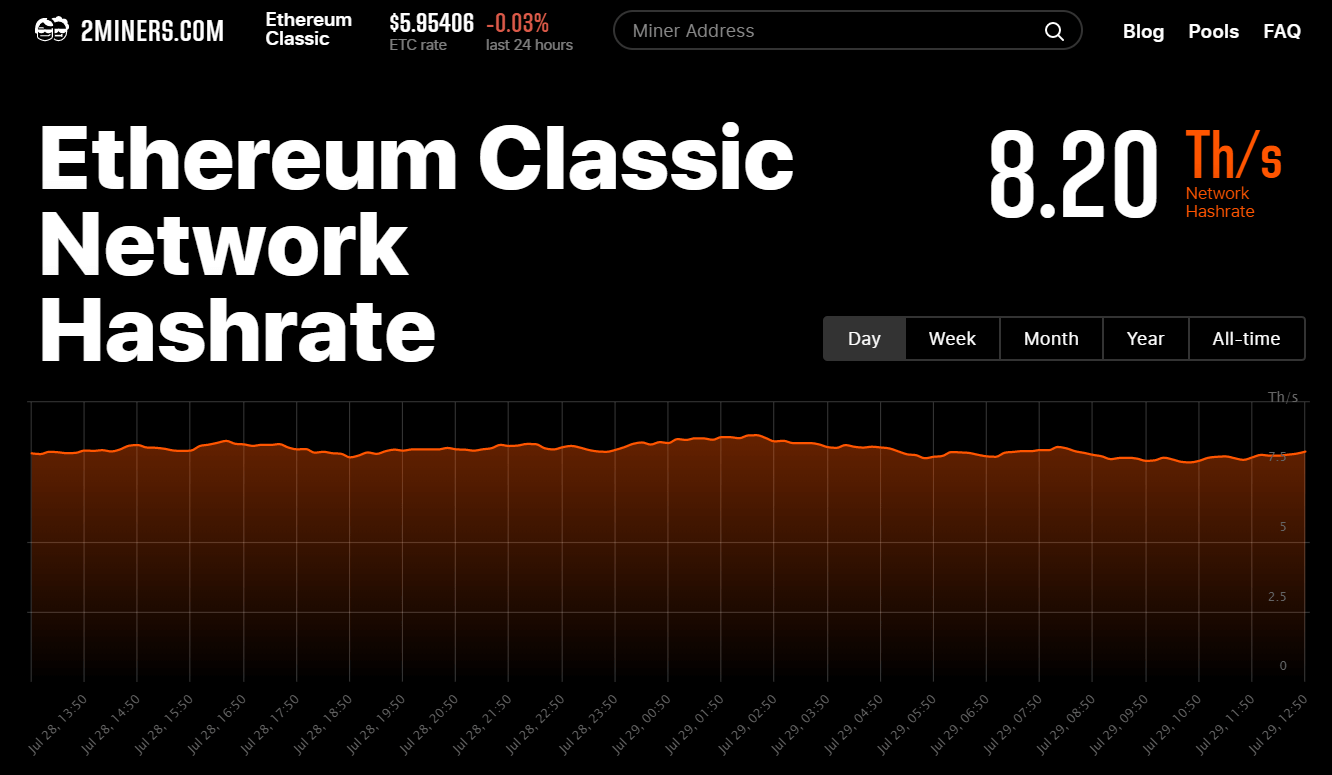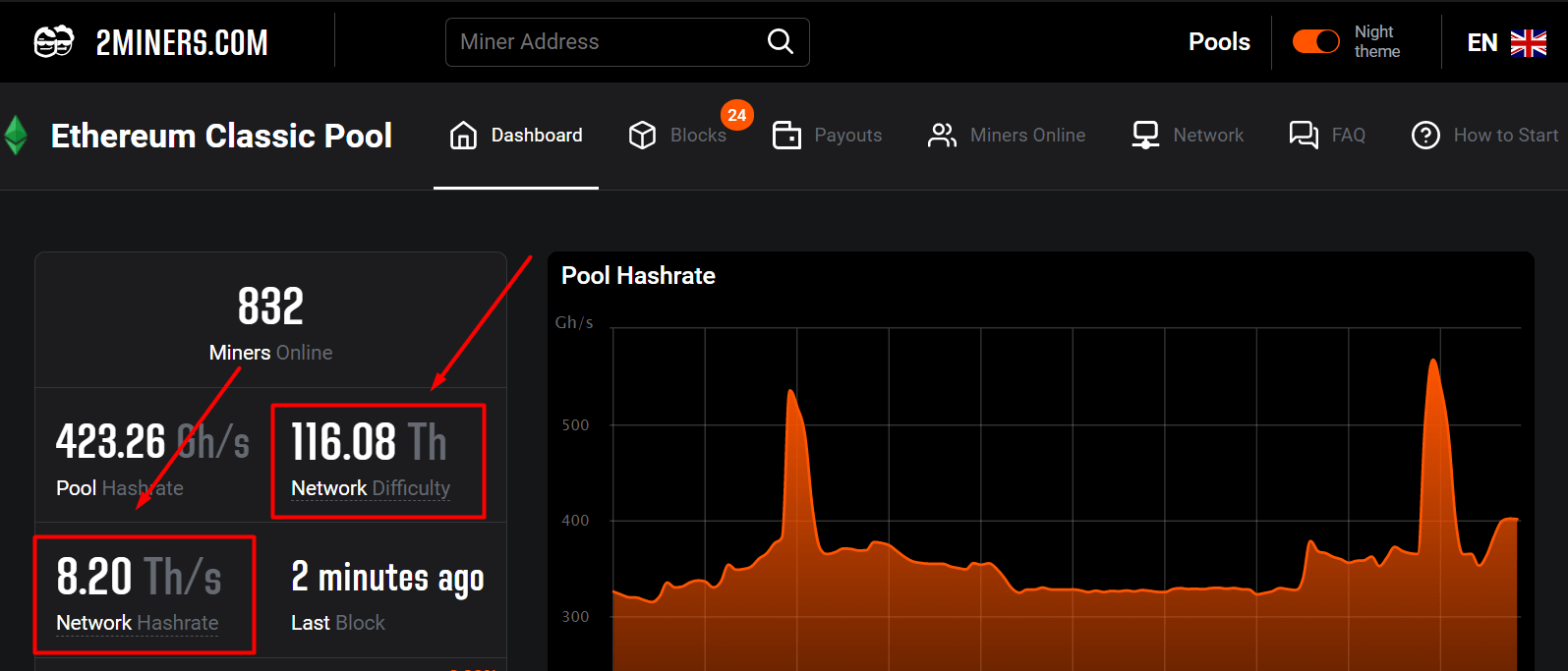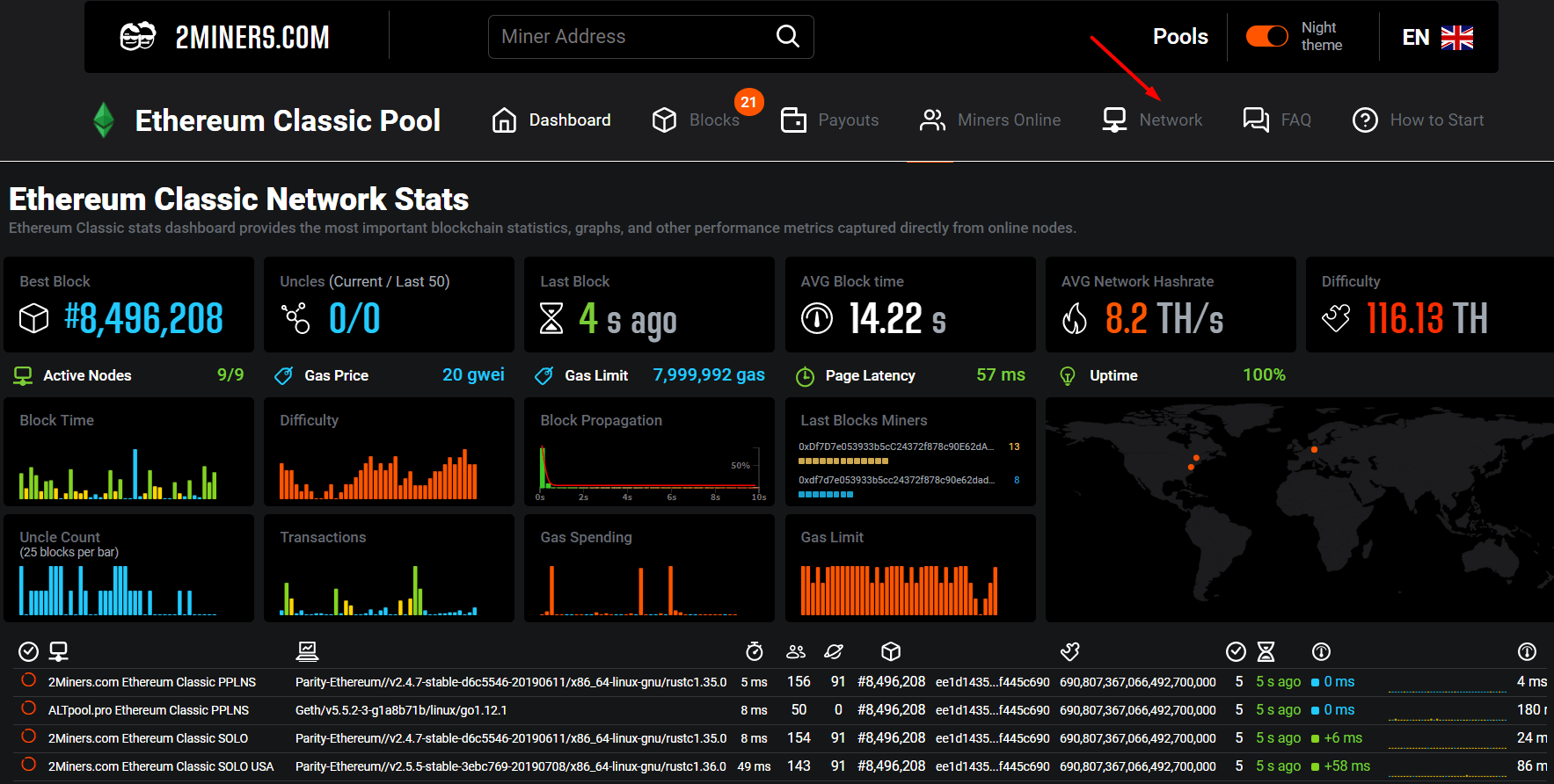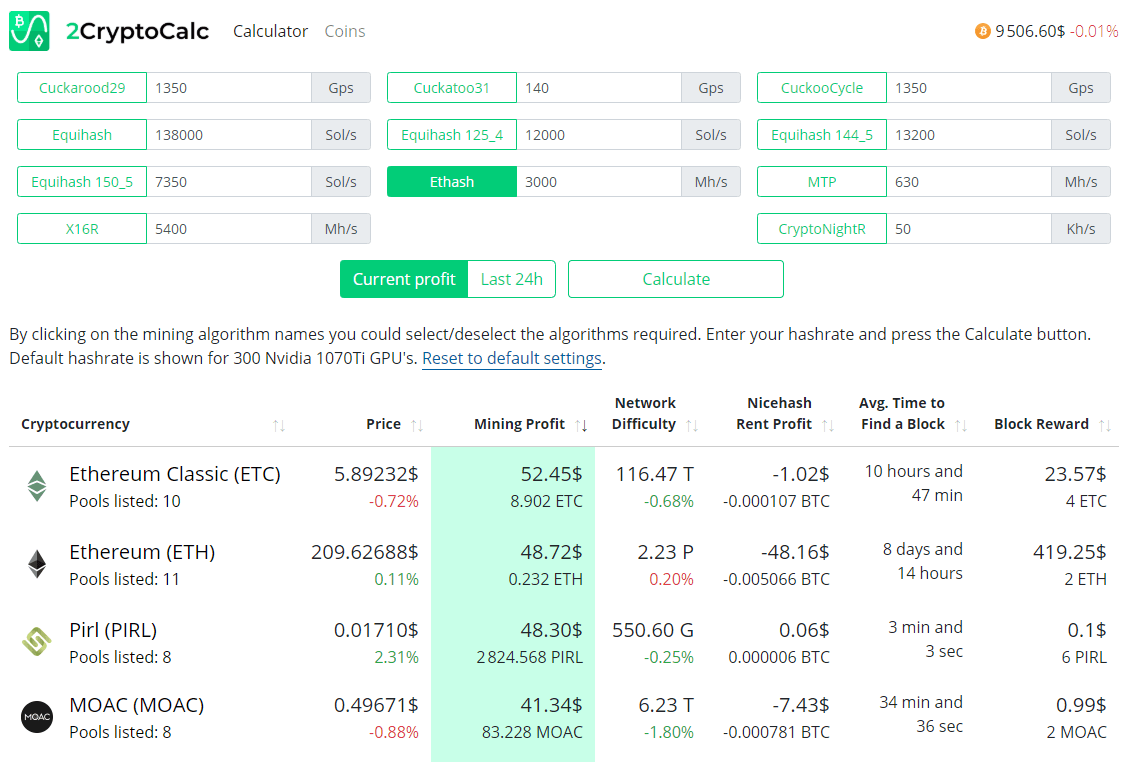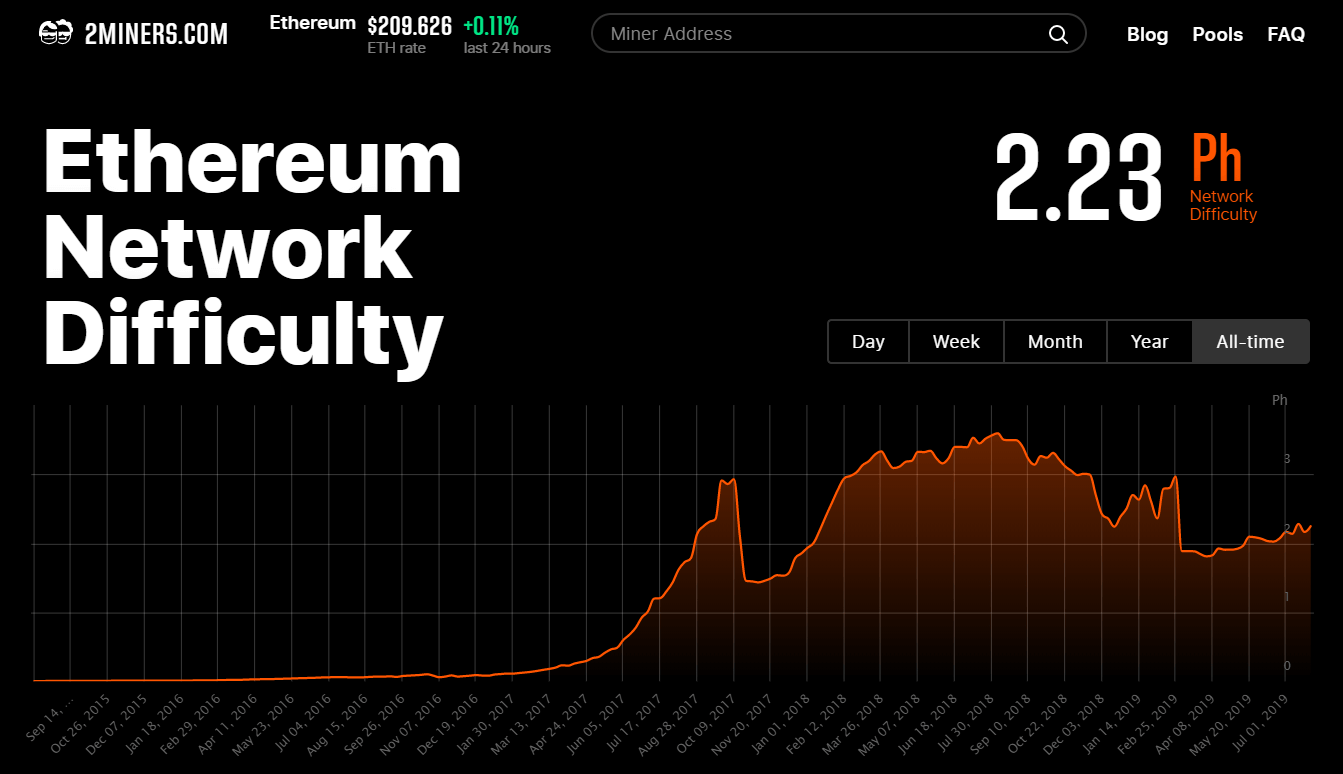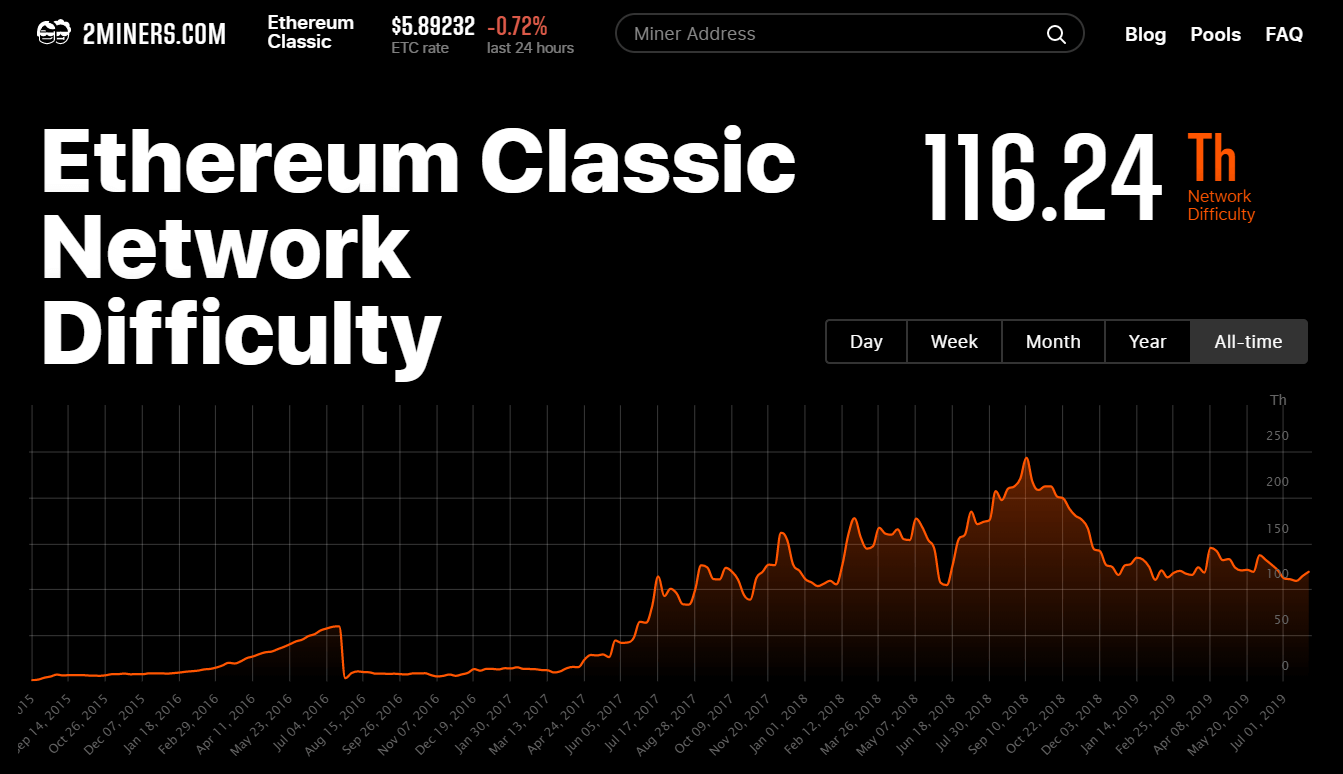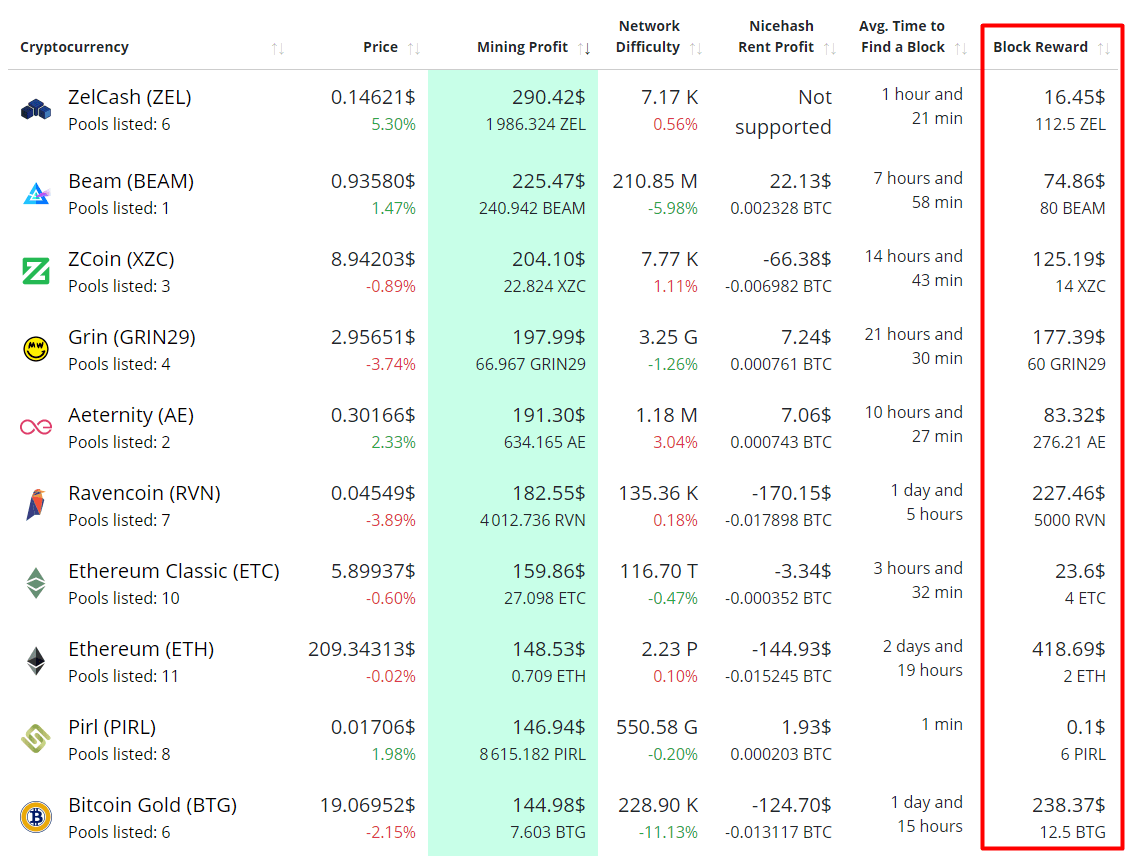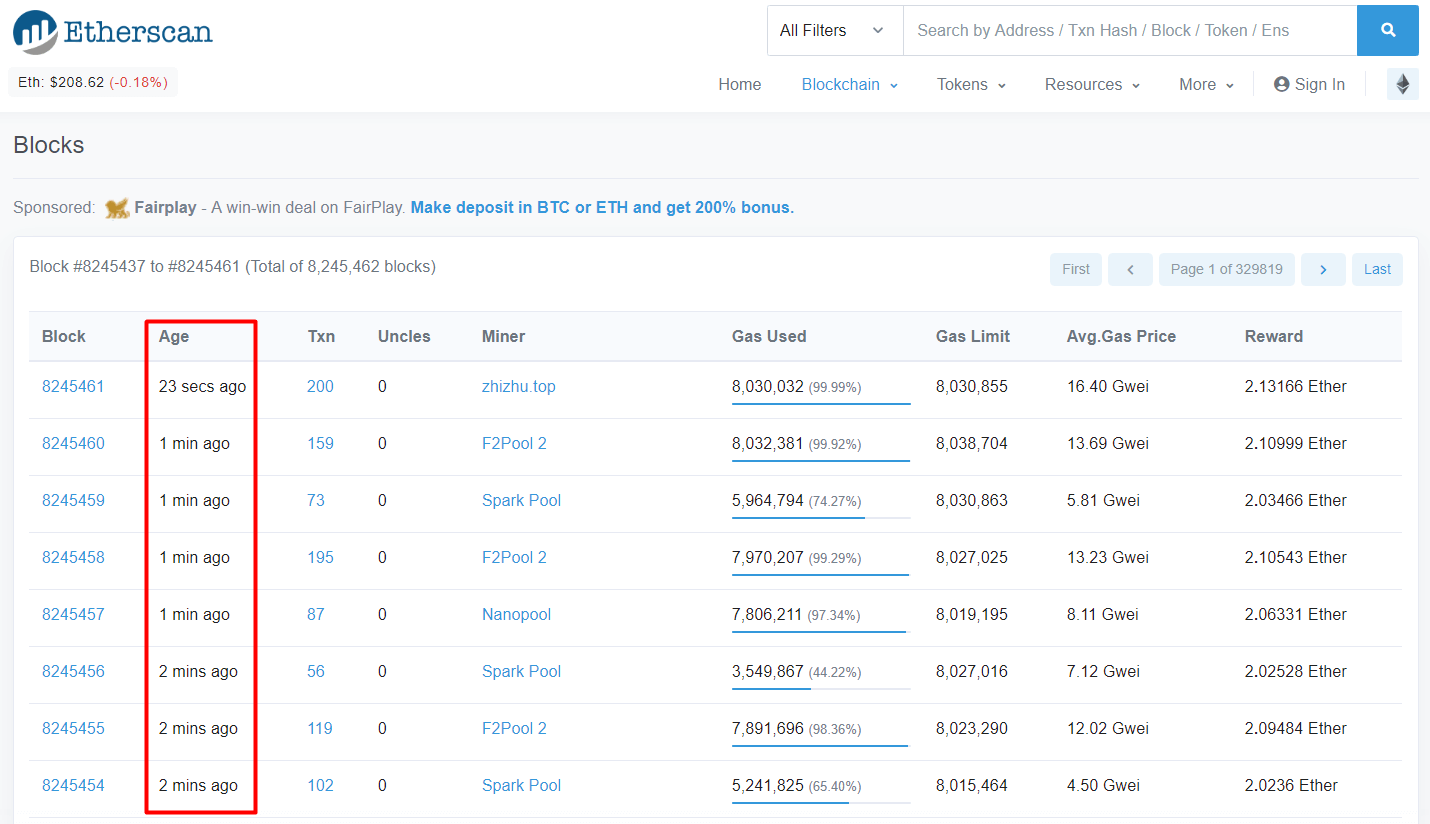- Уничтожаем криптомифы: соло-пул для майнинга бесполезен, своя нода лучше
- Что такое соло-пул? Как вообще пул может быть «соло»?
- Недостатки соло-пула
- Достоинства соло-пула
- Выделенный мощный сервер
- Высокоскоростной интернет-канал
- Надёжное соединение с другими нодами
- Обслуживание и точная настройка
- Резервная нода
- Полная поддержка работы с Nicehash
- Наглядная статистика работы ферм
- Автоматические уведомления
- Статистика работы соло-пулов
- How the Mining Pool Works: PPLNS vs. SOLO
- What is Blockchain
- How Does Mining Work
- Mining Pools Nowadays
- Mining With One GPU
- How the SOLO Mining Pool Works
- Where to Find Network Hashrate and Difficulty
- Where to Find Network Statistics
- How Much Can I Earn SOLO Mining
- Best Coins for SOLO Mining
- Block Rewards in Mining
- Cryptocurrency Mining Block Time
Уничтожаем криптомифы: соло-пул для майнинга бесполезен, своя нода лучше
Когда криптовалюты только появились, каждый майнер майнил сам по себе, то есть в соло. Потом конкуренция выросла, поэтому владельцам ригов пришлось объединяться в группы. Так родились майнинг-пулы.
В начале было Соло, и Соло было Бог.
Поначалу каждый майнер имел свою собственную ноду. Вместе с появлением майнинг-пулов необходимость в этом отпала.
Соло-майнинг по-прежнему остался, но теперь существуют и специальные соло-пулы. На них майнеры могут самостоятельно находить блоки на монетах с низким хешрейтом, а также арендовать мощности и копать главные мировые криптовалюты: Bitcoin, Ethereum, ZCash, Monero и так далее.
Очень часто “знатоки” пишут, что соло-пулы — полный бред. Мол, они бесполезны и лишь отбирают комиссию у майнеров. Иначе говоря, соло-майнинг нужно якобы запускать исключительно на собственной ноде. Уничтожаем этот миф!
Что такое соло-пул? Как вообще пул может быть «соло»?
В переводе с английского «Pool» означает «объединение». Этот термин начали использовать для обозначения именно объединения майнеров, то есть сервера, который раздаёт майнерам задачи и получает от них в ответ решения. Когда кто-то из майнеров на пуле находит решение криптовалютного блока, вознаграждение за найденный блок делится среди всех участников пула в соответствии с их хешрейтом — вложенной мощностью. Детали процесса описаны в этой статье.
Соло-пул работает идентично обычному, только вознаграждение за найденный блок на нём не распределяется среди всех майнеров. Награду за блок в соло целиком получает майнер, который его нашел.
Кстати, многие жалуются, что называть соло-пул «пулом» некорректно. Ведь какой же это пул, если здесь каждый за себя? Наверное, это перебор, ведь как именовать его ещё? Соло-сервер? Соло-нода? Термин «пул» давно устоялся, хотя в теории ситуацию реально изменить. Мнением по теме делитесь в Телеграм-чате, обсудим.
Недостатки соло-пула
Комиссия в размере 1-2 процентов в зависимости от пула. Пулы 2Miners, например, берут 1,5 процента комиссии на всех соло-пулах. Так что если майните Ethereum в соло и находите по 2 блока в день, при доходе в как минимум 600 долларов комиссия составит всего 9 баксов.
Да. Всё. Переходим к достоинствам.
Достоинства соло-пула
Перед рассмотрением достоинств соло-пула нужно сделать важное замечание: скорость решает всё. О чём это? Прочитайте статью о разных видах блоков в майнинге Биткоина и Эфириума. Она здесь.
Эффективная криптовалютная нода должна выполнять две задачи: максимально быстро понимать, что у неё есть решение блока, а также максимально быстро передавать его большому количеству других криптовалютных нод.
Скорость, скорость и ещё раз скорость.
Если нода тормозит и передаёт решение позже, в случае майнинга Ethereum майнер рискует получить Uncle-блок. В случае с Биткоином ещё хуже — останемся ни с чем. А теперь переходим к достоинствам, их много.
Выделенный мощный сервер
Для поддержания собственной ноды нужно иметь отдельный компьютер, на компьютере должна быть ОС Linux, например Debian/Ubuntu. Обычные процессоры по типу i3 или i5 не всегда могут оперативно обработать информацию, которую получает нода.
В то же время на профессиональных пулах используются специальные серверы, также они оснащены процессорами Xeon. Очень важную роль играет жёсткий диск, вернее твердотельный накопитель. 2Miners использует только NVMe SSD. Размер диска должен быть большим, поскольку нода Ethereum занимает уже более 220 ГБ.
Покупка хорошего сервера для ноды обойдётся не менее чем в 80 тысяч рублей для подержанного варианта и 300-400 тысяч — для нового. Как думаете, окупится ли такой сервер когда-нибудь, если он будет предназначен исключительно для хостинга криптовалютной ноды?
Высокоскоростной интернет-канал
Скорость подключения 2Miners — 1 Гбит/с. Комментарии излишни. Быстрое соединение означает больше времени на поиск блока. А если в сети случится разделение, и нужно будет синхронизировать блокчейн заново? Ох, в домашних условиях на это уйдёт много часов.
Надёжное соединение с другими нодами
У 2Miners максимально возможное количество соединений с другими криптовалютными нодами для каждого пула. Это значит 256 постоянных соединений для Ethereum, 150 — для Ethereum Classic и так далее. Построение сеть тоже особенное: «ноды-друзья» предварительно проверяются на скорость соединения и надёжность.
Кстати, если ваш сервер находится в России, спешим вас огорчить. Около 50 процентов качественных нод заблокированы. Привет РКН!
Обслуживание и точная настройка
Профессионалы пула 2Miners постоянно мониторят обновления криптовалютных нод и всегда используют последние версии ноды. Тратить время на обновление и настройку не придётся.
Резервная нода
Для пулов основных монет по типу ETH, ETC, ZEC, XMR и XZC 2Miners держит по отдельной ноде, которая работает на случай непредвиденных ситуаций. Если с основной нодой возникает проблема, которую не удаётся решить за пару минут, всегда можно задействовать резервную. В такой ситуации майнинг переключится на неё.
Полная поддержка работы с Nicehash
Обычная нода требует нетривиальной настройки для работы с Nicehash. На 2Miners можно «заливать» любые мощности, вдобавок каждый пул постоянно проверяется на полную совместимость с Nicehash и Miningrigrentals.
Наглядная статистика работы ферм
Майнинг на пуле позволяет точно отслеживать работу оборудования: хешрейт и статистику нахождения блоков, в том числе удачу, найденные блоки, выплаты и далее по списку.
Автоматические уведомления
2Miners предлагает бесплатную услугу уведомления о нахождении новых блоков и отключении ферм. Работает по электронной почте и в Телеграме. Эти функции особенно важны при аренде майнинг-мощностей. Пользователь будет всегда знать, когда уже «пора отключаться», а когда просто «что-то пошло не так». Соответственно, так он сэкономит свои деньги.
Статистика работы соло-пулов
Выводы напрашиваются сами собой. Соло-пулы надёжнее, удобнее и проще в использовании, чем собственные ноды. Всё ещё думаете, что вас обманывают? Зайдите на 2Miners и посмотрите хешрейты коллективных PPLNS-пулов и соло-пулов.
Кто-то скажет: «Ого, ничего себе, сколько «дураков» майнит в соло!»
Посмотрите, сколько блоков в сети Ethereum нашёл PPLNS-пул и SOLO-пул: 8600 против 10000. Соло ведёт. На одном только SOLO-пуле Ethereum добыто 3 миллиона долларов по текущему курсу. Наверное, в этом что-то есть, правда?
Использовать соло-пулы для майнинга выгоднее, чем собственные ноды. Не надо жадничать и экономить 1-2 процента комиссии. Эта небольшая плата окупится с лихвой, поскольку в итоге соло-пул позволит заработать намного больше.
Обладателям небольших майнинг-мощностей не стоит тратить время на ноду, лучше отдать это на аутсорсинг. Если есть большая собственная или арендованная мощность — тем более стоит передать работу по поддержанию ноды в руки профессионалов.
Например, серверы соло-пулов 2Miners размещаются на мощном оборудовании с высокоскоростным интернет-каналом. Ноды соло-пулов 2Miners имеют максимальное количество пиров, ежедневные бэкапы и прочие прелести. В качестве бонуса статистика на пулах позволяет использовать разные стратегии майнинга.
Источник
How the Mining Pool Works: PPLNS vs. SOLO
Let’s make it clear what mining is and how the mining pool works. We will try to explain it in a simple “For Dummies” way.
If you want to skip education check out how do the professional miners track the network all day long and in certain moments join the mining process using their own mining rigs or Nicehash rented hashing power -> Read our post Solo Mining Pools – How to Catch Your Luck.
What is Blockchain
Cryptocurrencies run on blockchains. A Blockchain is a sequence of blocks. Each new block is a piece of data. It contains information about the transactions accomplished within the last minutes or seconds (conditionally) since the previous block was found. Blockchain is always compared with a ledger. Each block with transactions is a page of the ledger. By ledger we mean an accountant book, not a Ledger Hardware Wallet for different cryptocurrencies.
How is the new block created? Who could turn the page of the ledger? Each new block contains a “puzzle” based on the data from a previous block. Miners from over the World try to find a solution for this “puzzle” and get rewarded. This irreversibility of the blocks makes the blockchain so unique. Hackers could not delete any block of the blockchain or substitute it.
Why is this irreversibility so important? Why should someone remove a cryptocurrency block? Let’s say the Bitcoin cryptocurrency block #500 001 contains the transaction where you’ve sent $100 000 in Bitcoins to a Tesla dealership to buy a car. When the vehicle is taken from the dealership, you may want to remove that block with your transaction. If you succeed, you have both $100 000 in Bitcoins and a new Tesla car. Hopefully, that is not possible. This is the main blockchain principle.
How Does Mining Work
The “puzzles” are being solved by your processors, graphics cards, FPGA or ASIC hardware. They are very complicated even for modern PCs, and their solving requires a tremendous amount of time, especially if you are alone. At the earliest days of the mining, any processor or GPU had the sufficient power necessary for finding many solutions per day and getting a reward for the detected block. With an increase of the interest to the cryptocurrencies, the difficulty level of the “puzzles” also increased, and a standalone PC or a single GPU could not find many solutions anymore. The miners have started to build the mining rigs – computers with multiple GPU’s installed. The photo below shows the mining rig with eight graphics cards installed.
The difficulty level was rising because the reward for the newfound block was growing as well as it’s equivalent in value. That was the time when miners decided to unite their efforts and create the mining pools. Therefore, even weak devices that are working simultaneously on solving the same “puzzle” have a chance to find its solution which would enable miners to create a new block.
Mining Pools Nowadays
Bitcoin cryptocurrency network has, on average 144 blocks a day. Mining is highly competitive. There are many more miners in the World than 144 and each of them wants to get some reward on a daily basis. However, we have the invention mining pools to take advantage of this issue. Many mining devices work together in a pool to solve the “puzzle,” finding solutions for the new blocks. Mining pool is a server that unites the miners. It sends the mining job to his miners and receives the solutions.
The pool who solves the “puzzle” gets a reward. For instance, in Bitcoin blockchain the reward is 12.5 BTC, in Ethereum network— 2 ETH, in the Litecoin network — 12.5 LTC, etc. Mining pools get solutions from all the connected miners, and if one of those numerous solutions appears to be a proper one, the pool creates a new block on the blockchain and gets a reward for this newly created block. This reward is shared proportionally to the efforts applied by the miners and forwarded to their wallets. The network will never know which particular miner has found the block solution. The pool would be represented as the miner who found the block.
Mining pool uses the “share” concept. Each device receives a computational task of a significant lesser level of difficulty, and the mining pool checks to see whether or not each obtained solution represents a complete solution of the block “puzzle” or not. This approach helps the pool to distribute the mining rewards. 2Miners uses PPLNS payout system. Pool checks how many shares the miners have sent from the last N shares of the pool and makes the payouts based on that value. Mining shares are also used by the pool to show the display the miner’s statistics, especially hashrate.
For some cryptocurrencies, you could still find a block solution within a reasonable amount of time even if you mine alone. It is always hard to run the full node for each coin you want to mine at your local facilities.
Therefore 2Miners presents the SOLO pools for every coin we have. It works the same way as standard pool: you connect to a specified address with your mining software, and you get all the available 2Miners features: statistics, bots, etc.
Mining With One GPU
Is it possible to mine with a single GPU? Yes, it is. Mining pools exist especially for you. No matter if your hashrate is low, you could still get a regular reward if you mine at the pool. You could never find a cryptocurrency block alone, but the pool could do that. If you have participated in the block solution, you will get your piece of the block reward. Check our guide What to Mine with Low-End GPU.
How the SOLO Mining Pool Works
SOLO mining is a type of cryptocurrency mining while using your own (or leased) hardware but without any help from other miners. If you find a solution for a block — you get the coins if you don’t — you get nothing. “The winner takes it all” as the ABBA song says.
You can mine SOLO on your own or via individual SOLO pools. If you have no experience in mining pool setup (both software and hardware), we recommend you to use the special SOLO pools. Before starting your SOLO mining, you need to calculate the probability of finding the blocks with your hardware with 2CryptoCalc.com. We also recommend you to check the network hashrate chart. For example here is the chart for Ethereum Classic (ETC).
Where to Find Network Hashrate and Difficulty
On the main page of each 2Miners mining pool Network Hashrate and Network Difficulty is shown. If you want to check not only the current information but the data for the last Week, Month or even Year, click the link below the value as shown on the screenshot below.
Where to Find Network Statistics
You could find the complete network statistics if you click the Network tab on any page of your mining pool. Network statistics is updated in real-time. It could show you how do the cryptocurrency nodes operate when blocks are found, gas used in blocks an many more. Network statistics are indispensable for professional miners (SOLO miners especially).
How Much Can I Earn SOLO Mining
Let’s analyze the suitability of SOLO mining for Ethash mining algorithm for 12-13 mining rigs with 8 GPU’s each. This hardware has a hashpower of approx. 3000 MH/s (= 3 GH/s). Go to 2CryptoCalc.com, enable Ethash algorithm only, enter 3000 in the Ethash hashrate field.
If we are mining the Ethereum Classic, a simple calculation shows us that our capacities will bring us 8.9 ETC coins per day. Block reward in the Ethereum Classic is 4 ETC coins (could be a little less if the Block is Uncle but let’s assume we get standard blocks only). In the ideal World (= on average), we will find two blocks per day and get eight coins. On a bad day, we will encounter one block or even no blocks, on a good day — three blocks and more.
Let’s assume you SOLO mine MOAC. Calculator expects 83 MOAC daily reward. Each MOAC block is two coins. This means you find 41 MOAC blocks on average every day if you mine SOLO.
What option do you think is more reliable: 2 ETC blocks a day or 41 MOAC blocks a day? Obviously, MOAC SOLO mining is more reliable. You don’t risk much. Even if you find 40, 39 or even 35 blocks you don’t lose much. However, if you mine ETC, you could finish the day without any blocks at all. On the other hand, if you believe you are lucky, ETC could bring you much more money. If you find 3 ETC blocks a day, you get a great bonus comparing to ordinary pool mining.
If the power of your hardware is less than 3000 MH/s other Ethash coins would suit you better: Pirl, MOAC, Metaverse, etc. Sometimes the profit is more if you mine MOAC for example with hashpower of 10 000 MH/s or more. It depends on the network hashrate and difficulty. The experienced SOLO miners often choose a specific coin to be mined every day, considering many indicators.
Best Coins for SOLO Mining
As practice shows, the SOLO mining of simple coins using powerful hardware results into an increment of profit. We base our experience on the Ethereum, Ethereum Classic, MOAC, Metaverse, Pirl, and Callisto coins. If you look at the difficulty chart of the Ethereum and Ethereum Classic, compared to the others, you will understand why the mining of Classic is more profitable than they are. It is always good to get some regular payment, so don’t go alone for harder to use Ethereum while you have just one GPU.
Note that Ethereum difficulty is shown in Ph and Ethereum Classic difficulty is shown in Th. 1 Ph equals to 1 000 Th, so Ethereum network difficulty is 20 times more than the network difficulty of Ethereum Classic.
There are some little-known coins on the Ethash algorithm, which you can mine in SOLO – for example, Dubaicoin. You need to be very careful with these coins because they typically are a victim to a drastic change of the exchange rate, and the difficulty of their network will change spontaneously – however, it is possible to make good money on these coins. Usually, the cryptocurrency exchanges for these coins are not very reliable. For example, Cryptopia was hacked and closed the past year.
Let’s get back to the SOLO pool itself. Your graphics cards are searching for the solutions (shares) and forwarding them to the pool. If one of these solutions appears to be a correct one, the pool gets a reward for the created block.
At the SOLO pool, a miner whose GPU found a proper solution gets ALL the reward COMPLETELY.
If you are inquisitive, then you probably checked which of the miners from the big pools had found the block solution. Usually, those are the big miners, but at joint pools, they have to share the profit with all small miners.
Block Rewards in Mining
For instance, in the Zcash network a block reward is ten coins or $675, in Ethereum network – 2 coins or $420, in Ethereum Classic — 4 coins or $24, in MOAC — 2 coins or $1. All information about the block rewards could be found on 2CryptoCalc.com.
It is essential to understand that to find the blocks in these networks, different capacities are required. Let’s say, 3000 MH/s hardware can find two blocks per day in the Ethereum Classic network or 40 blocks in the MOAC network.
Cryptocurrency Mining Block Time
One of the most critical parameters of any cryptocurrency network is block time; that is the time needed to find a new block (Read more). Block time is required to make the proper rewards calculations. You could see the real block time on Network Statistics page mentioned above or on the blockchain explorer. For example, use Etherscan for Ethereum network.
Why is block time so important? If you read Mining Difficulty and Network Hashrate Explained you already now that when there are no blocks in the network for some period of time the network reduces the mining difficulty. This allows miners to find “fast” blocks(it is another long story, though). Some pro miners are spending days and weeks waiting for one proper moment to load an enormous hashrate to the particular network.
If you do not have enough hashing power for SOLO mining on your own, you could always rent some on Nicehash.com or Miningrigrentals.com. We know a lot of examples when miners made a vast profit doing SOLO mining.
Now you understand how the mining pool works. Go and make those coins!
If you have any questions, don’t hesitate to ask the professional miners in our crypto chat.
The 2Miners pool co-founder, businessman, miner. In 2017 started mining cryptocurrencies and built many rigs on his own. As a result, he gained lots of practical knowledge and became interested in sharing it with others. In his articles on 2Miners, he shares useful tips that he tried and tested himself. For example, Darek gives advice on how to buy hardware components for the basic mining rig and how to connect them to each other correctly. He also explained lots of complicated terms in simple words, such as shares, mining luck, block types, and cryptocurrency wallets. After the pool was launched, he published a series of articles ‘Crypto Mythbusters’ where he explained how to protect the network against 51% attack, talked about cryptocurrency mining difficulty and difficulties of launching your own node.
Источник
